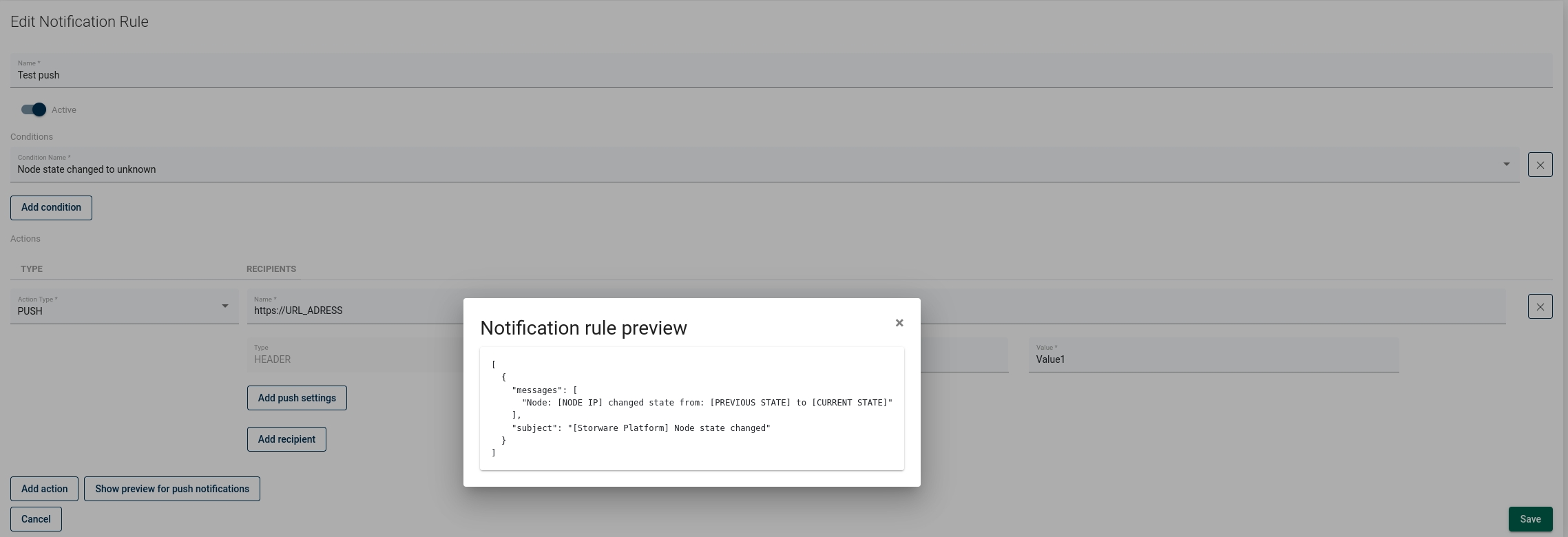Notification Rules
General
Storware Backup & Recovery allows a Notification Rules feature to create a semi-custom rule that will send notifications triggered by an event specified in a rule. Go to Settings on the left menu and then click on the Notification Rules button.

Creating new Notification Rule
To create a new rule, simply click on Create button. A new window will appear.

Fill in a name for your rule, set your notification to active and add one or more conditions from a list.

For some conditions, you will need to provide more information, for example, choose TaskType.
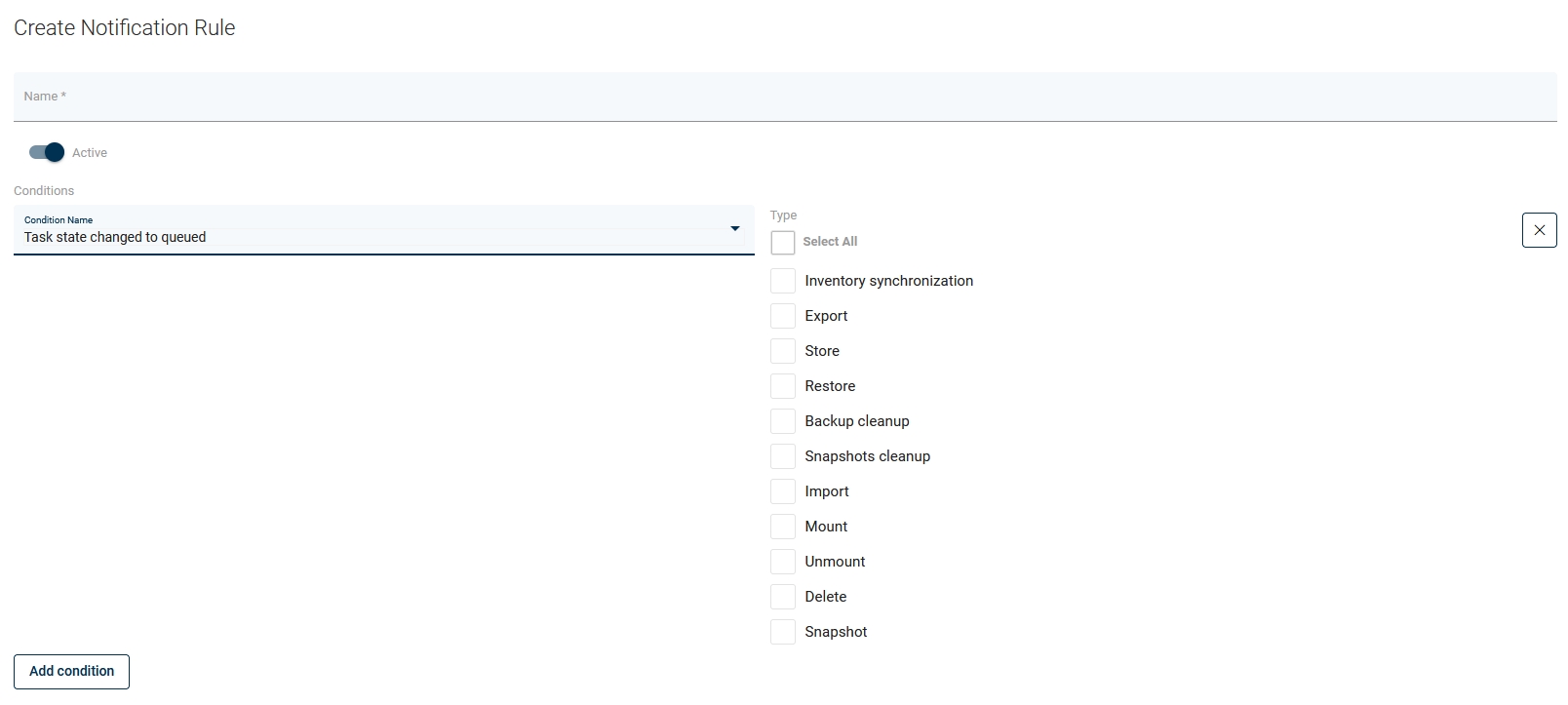
The last step is to add an action with related recipients. Click Add Action button, choose Action Type from a list, add one or more recipients passing their email addresses.

After an event that will trigger a notification, all recipients who have been added to the notification rule will receive an email notification.

Slack integration
From Storware Backup & Recovery version 5.0, there is a possibility to send notifications to the Slack channel. Follow these steps to authorize platform in your Slack workspace:
1. Go to this page and create a new Slack app in the workspace where you want to post messages. Select From scratch option and Enter the App Name and Workspace in which you want to use this app.

2. From the Features page, toggle Activate Incoming Webhooks on. Click Add New Webhook to Workspace.
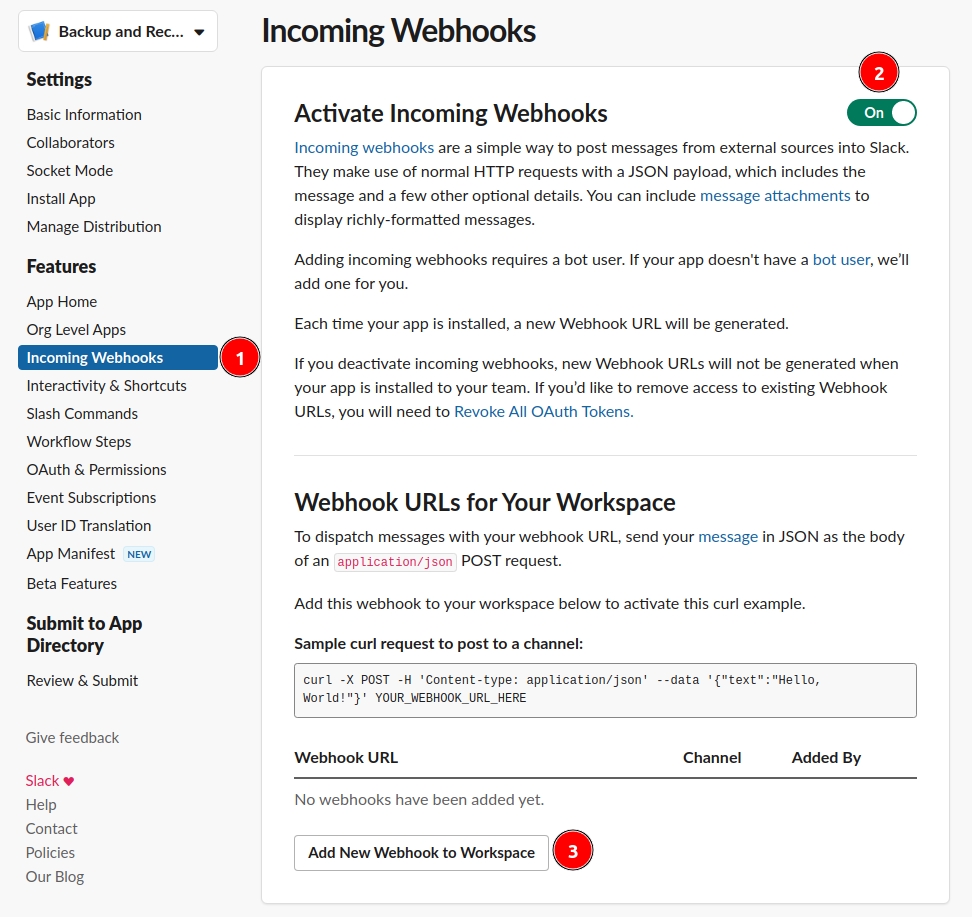
3. Pick a channel that the app will post to, then click Allow.
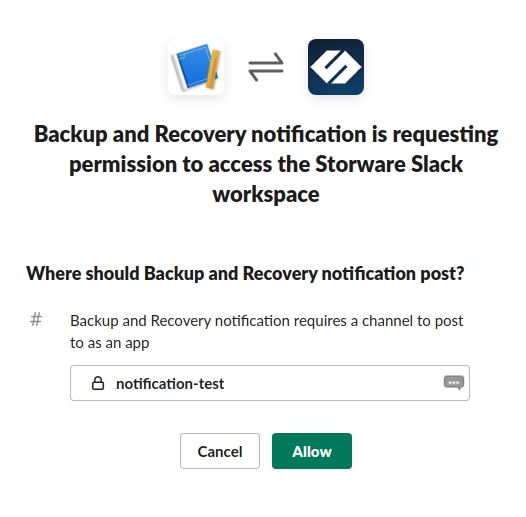
4. Copy the Webhook URL and use its Notification rules. Select Action Type as SLACK and paste the URL in the Name field.
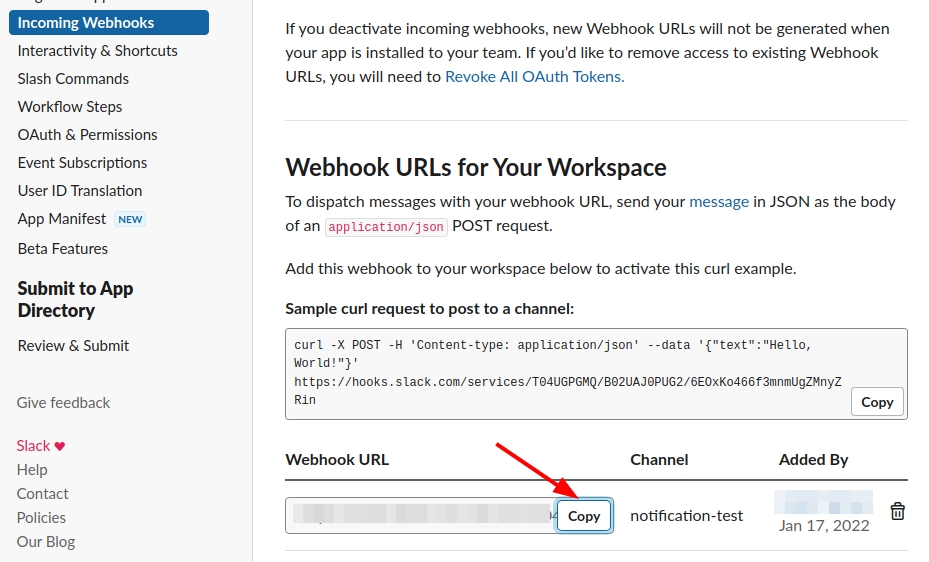

Configuration of Push Notification
To configure a push notification, provide URL of endpoint address, where you want to receive notifications and add if needed custom headers that will be added to POST request with notification.\
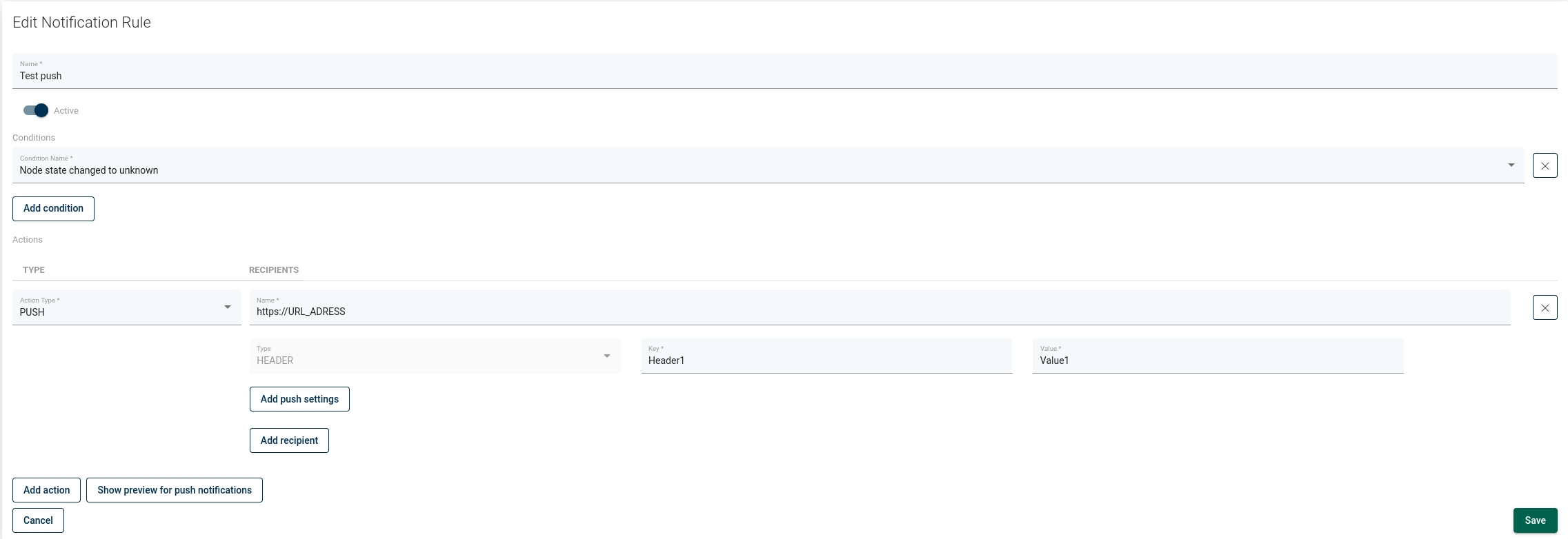
Body of notification will contain two fields:
subject
messages - list of notification messages that have been generated base on notification policy and triggered during run of program
To check how your notification will be looking please click on button Show preview for push notifications
